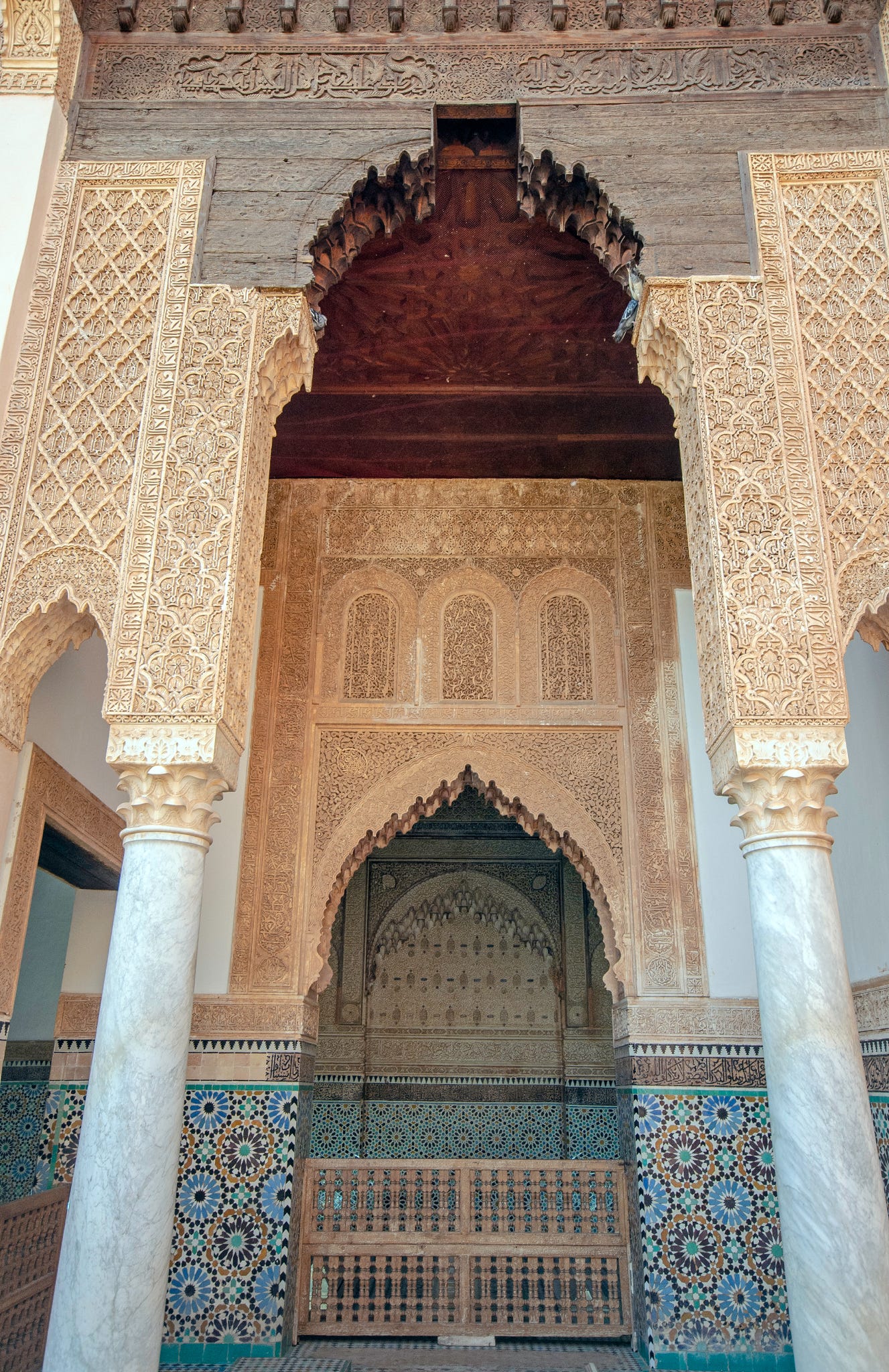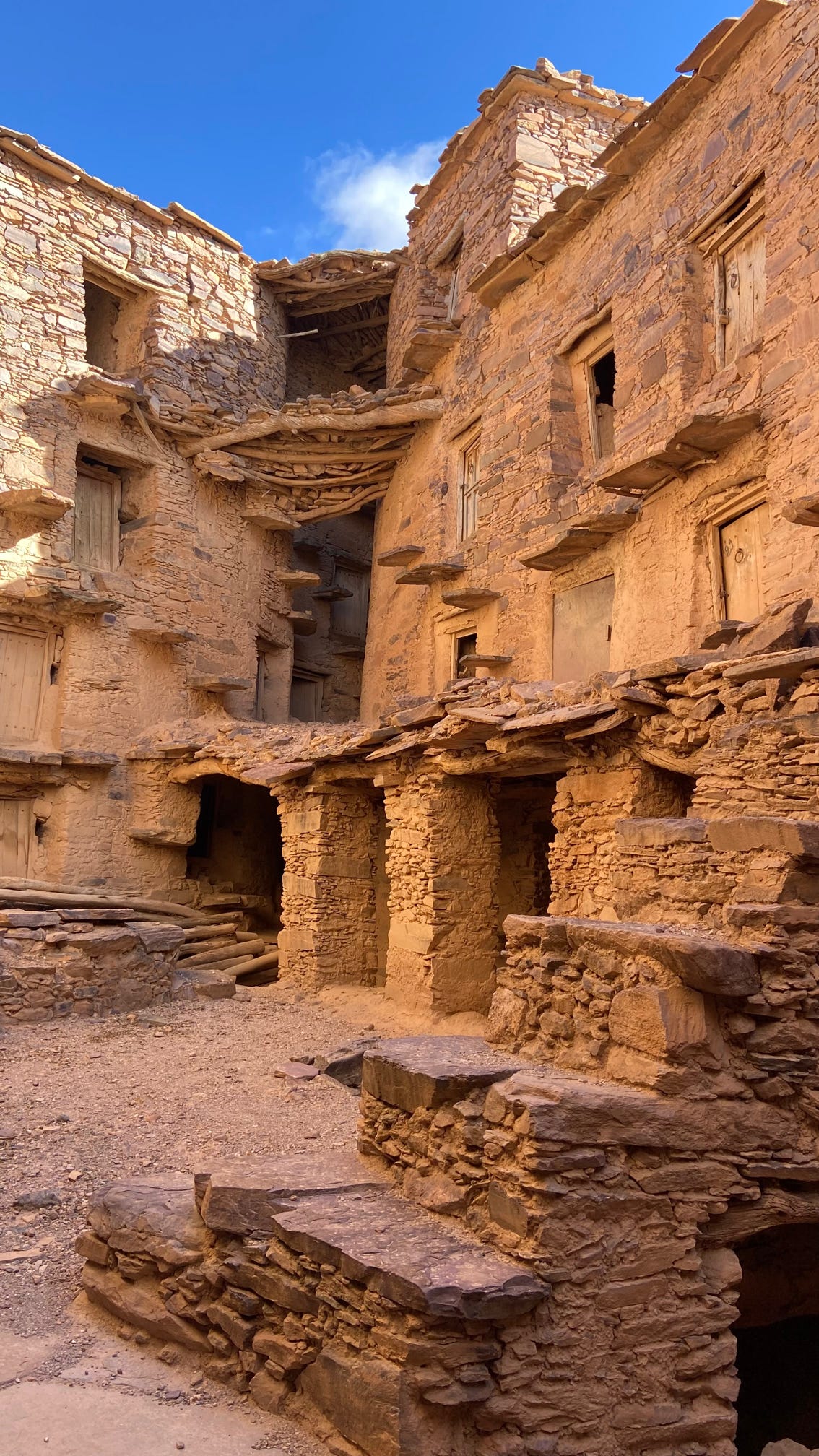
The Powerful Hand of Fatima: A Symbol of Protection 5
The Hand of Fatima:Strength,Fortune,and Safeguard
The Hand of Fatima or Khamsa can be found in souks all around Morocco. Khamsa means five in Arabic and refers to the 5 fingers of the hand.
Khamsa is typical of both the Islamic and Jewish religions,
and for Muslims it is a symbol of faith and patience.
The Hand of Fatima can be found in many forms and is made from different materials.
It can be metallic, ceramic or made from camel bone.
It is powerful against the evil eye and against negative influences in general.
The number five is a reminder of the pillars of Islam which are the statement of faith and prayer, making the pilgrimage to Mecca, Zakat (support for the needy) and fasting in Ramadan.
Khamsa also represents the eye of Allah who watches over worshippers.
For Shiites the five fingers of Khamsa represent the members of the sacred family: Mohamed, Fatima, Ali, Hussein and Hassan.
In the Jewish religion it is known as the Hand of Myriam’s sister of Aronne and Moses.
In this case the number five is associated with the number of books of the Torah.
(Pentateuch: Genesis, Exodus, Leviticus, Numbers, Deuteronomy).
The origins of this symbol are even more ancient and still yet to be fully discovered. Similar symbols of protection are known to have existed in Mesopotamia and even in Buddhism through the number of gestures of Buddha.
Material Variations
The Khamsa can be found in many different forms and made from a variety of materials, including:
- Metal: Often crafted from brass, silver, or gold.
- Ceramics: Traditional hand-painted designs on pottery.
- Camel Bone: A natural and durable material, often intricately carved.
Each version carries its own unique charm and symbolism, making it a versatile and cherished item.
Cultural and Spiritual Resonance
- In Morocco, the Khamsa is a common sight in souks (markets), where it is sold as a decorative item, jewelry, or talisman. Its spiritual power, particularly in protection, ensures it remains a highly coveted symbol.
- In other cultures: Similar protective symbols of the hand have been used in various regions, from the hamsa in North Africa and the Middle East to Buddhist iconography, which uses hand gestures to convey protection and blessings.
A Timeless Symbol of Hope and Resilience
The Khamsa continues to transcend time, representing not only protection but also faith, family, and the sacred. Whether it appears in jewelry, wall hangings, or as a charm, it carries deep meaning across various religious and cultural contexts.
The Hand of Fatima, also known as the Khamsa, is a symbol that holds deep significance across various cultures, particularly in the Middle East, North Africa, and parts of South Asia. This ancient emblem is not just a decorative piece but is considered a powerful tool for spiritual protection, good fortune, and personal resilience.
Meaning and Origins of the Hand of Fatima (Khamsa)
The word Khamsa comes from the Arabic word for five, referring to the five fingers of the hand. The symbol itself has roots that stretch across time, with ancient origins in regions such as Mesopotamia. It was used as a protective amulet to shield against negative energies, including the evil eye, a powerful force believed to cause harm through envy or ill will. Over the centuries, it has evolved into a cultural and religious symbol, embraced by both Muslims and Jews, though it also has significance in other spiritual traditions.
While the exact origins of the Khamsa remain shrouded in history, its use as a spiritual emblem has been widespread, transcending time and geography.
Religious Significance of the Hand of Fatima
- In Islam: The Hand of Fatima is closely linked with the concept of faith and patience. The five fingers of the hand are said to represent the Five Pillars of Islam:
- Shahada – The declaration of faith.
- Salat – The five daily prayers.
- Zakat – Charitable giving to those in need.
- Sawm – Fasting during the holy month of Ramadan.
- Hajj – The pilgrimage to Mecca.
- In Shiite Islam: For Shiite Muslims, the five fingers of the Khamsa represent the sacred family of Prophet Muhammad: Mohammed, Fatima (his daughter), Ali (her husband), Hassan and Hussein (their sons). This connection to the sacred family gives the Hand of Fatima a deeply spiritual meaning in Shiite communities, reflecting themes of purity, sacrifice, and faith.
- In Judaism: The Hand of Fatima is also known as the Hand of Myriam, named after Miriam, the sister of the prophets Aaron and Moses. In Jewish tradition, the number five is significant because it corresponds to the Pentateuch – the first five books of the Torah:
- Genesis
- Exodus
- Leviticus
- Numbers
- Deuteronomy
The Khamsa as a Talisman of Protection
One of the most widely accepted roles of the Hand of Fatima (Khamsa) is as a protective amulet. It is believed to have the power to shield its wearer from the evil eye, a spiritual force often associated with misfortune, envy, or slander. The symbol is frequently used in the form of necklaces, bracelets, or wall hangings, and is considered a potent tool for safeguarding one’s well-being.
By displaying the Khamsa in homes or businesses, people believe that it can also protect against negative energy and ill-wishing, ensuring that only positive influences enter one’s life. Its power transcends religious boundaries, and it is widely regarded as a universal symbol of spiritual defense.
Material Variations of the Hand of Fatima
The Khamsa can be crafted from a range of materials, making it a versatile symbol that holds a unique appeal for different cultures:
- Metal: Many Khamsas are made from brass, gold, or silver, often intricately designed and polished, making them suitable for jewelry or decorative purposes.
- Ceramic: In some cultures, Khamsas are painted onto ceramic tiles, pottery, or plates, often featuring vibrant colors and traditional designs that reflect the local artistry.
- Camel Bone: A more traditional material, camel bone Khamsas are prized for their durability and often feature delicate carvings or inscriptions, making them highly valued in certain regions.
Each material used in crafting a Khamsa carries its own cultural significance, enhancing the personal connection that individuals feel toward the symbol.
Cultural and Spiritual Resonance of the Khamsa
In Morocco, the Khamsa is a common sight in souks (markets), where it is sold as a charm or talisman to protect people from harm. The Hand of Fatima’s spiritual significance ensures that it remains a highly sought-after item, not just for its beauty, but for its supposed ability to bring good fortune and peace of mind.
Moreover, similar protective symbols of the hand can be found in many different cultures across the world. From the hamsa in North Africa and the Middle East to hand gestures in Buddhist iconography, the universal appeal of the Khamsa’s protective qualities has made it an enduring symbol of hope and resilience.
A Timeless Symbol of Hope and Resilience
The Hand of Fatima (Khamsa) continues to be an important symbol in both religious and cultural contexts. Whether it’s worn as a necklace, displayed as art, or kept as a charm, the Khamsa serves as a powerful reminder of spiritual strength, family bonds, and divine protection.
In today’s world, it transcends boundaries of faith and tradition, offering comfort and hope to people from all walks of life. The Khamsa remains a timeless symbol of resilience and protection, bringing solace and blessings to those who embrace its powerful significance.
Moroccan Mystery
Take a trip with Moroccan Madness Adventures






